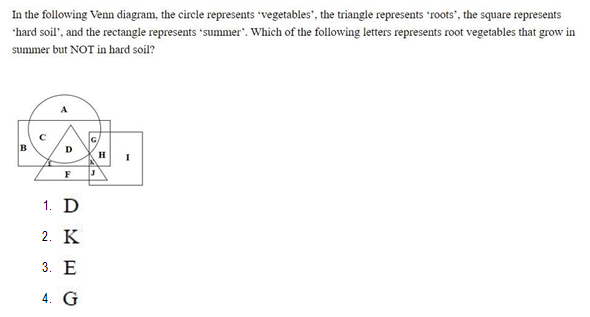Question
Statements: T < U > S; T ≥ V > W; X > Y ≥ Z > S
Conclusion: I. X > V II. W ≤ Y Read the following statements mentioned in the questions assuming the given statement to be true, find which of the following conclusion (s) among the given conclusions is/are definitely true and then give your answers accordingly.Solution
Neither I nor II is true. X > Y ≥ Z > S < U > T ≥ V, So X > V is False . W < V ≤ T < U > S < Z ≤ Y, So W ≤ Y is False.
Identify the figure which best represents the relationship among Flower, Rose, and Door.
Which of the following diagram correctly represents the relationship between Tiger, Giraffe and Animals?
Study the given diagram carefully and answer the question. The numbers in different sections indicate the number of students who have scored more than 7...
In the question, assuming the given statements to be true, find which of the conclusion (s) among given two conclusions is /are definitely true and the...
Sparrow , L eopard , Bird

How many such pairs of letters are there in the word ‘TEACHING’ which follow the same positional sequence as in the English alphabetical series (bot...
Seven girls Pw, Qw, Rw, Sw, Tw, Uw and Vw are sitting around a circular table facing the centre. Rw is an immediate neighbour of both Tw and Uw. Sw is s...
Two different positions of the same dice are shown. Select the letter that will be on the face opposite to the face having the letter T?
निम्नलिखित जानकारी को पढ़िए और नीचे दिए गए प्रश्नों के उत�...
Relevant for Exams:


